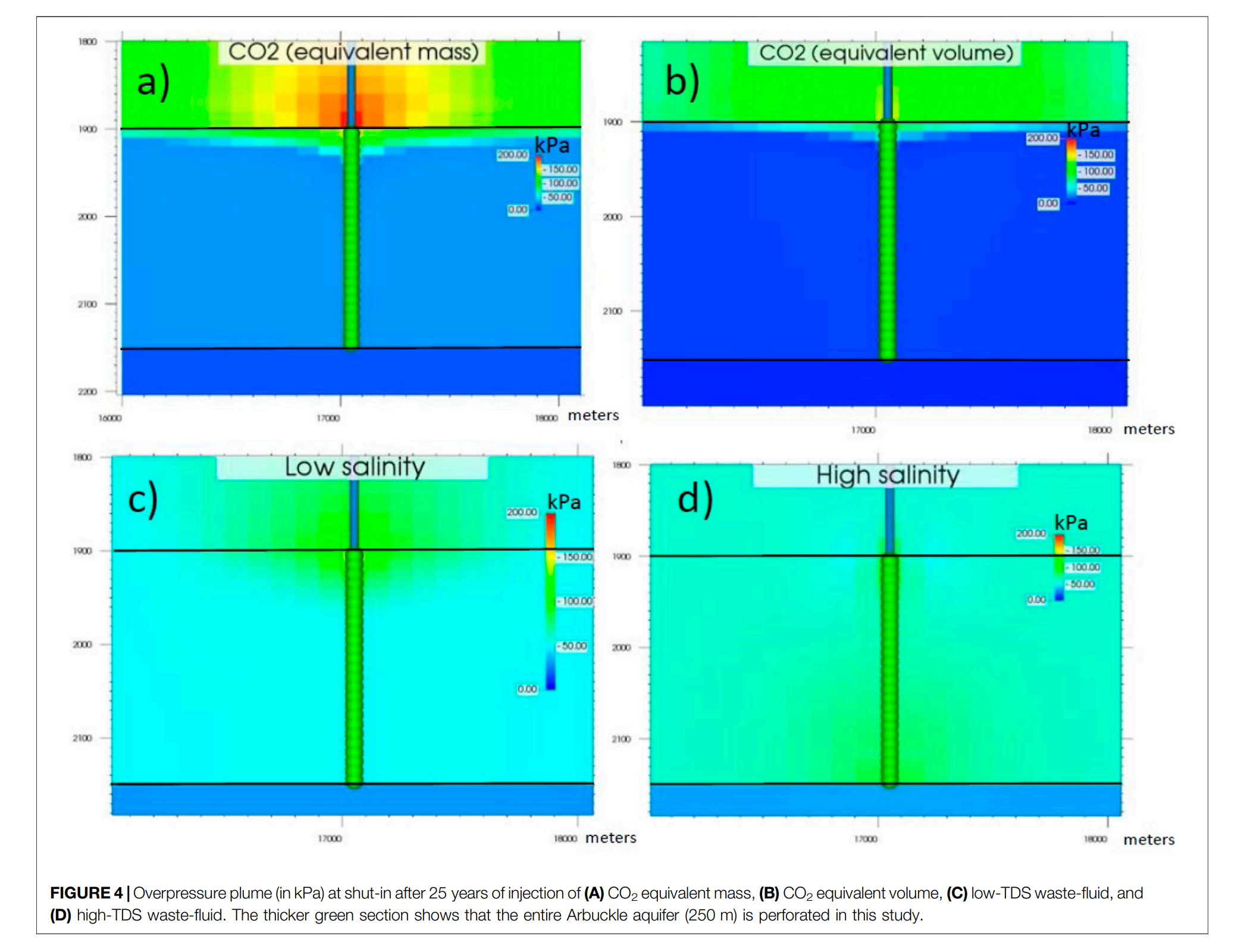Comparing CO2 and Variable-TDS Waste-Fluid Injection Into Deep Saline Geologic Formations
最近,美国国内收入局推出了45Q税收抵免措施,以此来减少人为的碳排放入大气中。这一举措再次引起了对碳捕集、利用和储存技术的关注。研究发现,西堪萨斯的深层碳酸盐储层具有储存二氧化碳的潜力,因为该地区迄今为止注入的废液量较低,没有引起明显地震活动。然而,自2013年以来,由于大量注入含有总溶解固体(TDS)的废液,堪萨斯发生了增加的地震活动,导致了地下压力的增加。
本研究对比了二氧化碳、低TDS和高TDS注入实践,并定量化了引起超压的空间和时间模式,包括盖层、储层以及与结晶基底之间的水力连接。堪萨斯人为地震活动的大部分发生在这些区域。研究结果显示,在注入变TDS废液时,盖层中的压力升高,而结晶基底中的压力降低。由于二氧化碳的密度和粘度较低,注入时会导致CO2浆流在储层顶部扩散,形成一个超压浆流,将原有储层溶液移动到盖层中。
相比之下,注入废液时会将更多的原有储层溶液移动到基底中,尤其是注入高TDS废液时。这一现象在渗透率高的碳酸盐储层中尤为明显,因为重力主导了黏性力,将二氧化碳和超压浆流移动到储层顶部。这项研究可能解释了全球CO2注入项目中没有人察觉到的人为地震活动的原因。
There is a renewed interest in carbon capture, utilization, and storage technology due to recently expanded US Internal Revenue Service 45Q credits as well as to reduce anthropogenic carbon emissions to the atmosphere. Deep carbonate reservoirs in western Kansas have the potential for CO2 storage because they have experienced low waste-fluid injection volumes to date.
Waste-fluid injection in Kansas has not caused felt seismicity for more than seven decades. However, beginning in 2013, the state has experienced increased seismicity due to increased subsurface pressure associated with the injection of large volumes of variable-TDS (total dissolved solids) waste-fluid in US EPA Class I and Class II wells. This work compares CO2, low-TDS, and high-TDS injection practices and quantifies the induced spatial and temporal patterns in overpressure in the caprock, reservoir, and its hydraulically connected crystalline basement, where the majority of induced seismicity in Kansas has been observed.
Our results show that pressure buildup is higher in the caprock and lower in the crystalline basement when injecting CO2 as compared to variable-TDS waste-fluid injection. The CO2 plume tends to expand at the top of the reservoir, primarily due to its lower density and viscosity than reservoir brines, creating an overpressure plume that moves the resident brine across the caprock. In contrast, waste-fluid injection moves more resident brine down into the basement, particularly when high-TDS waste-fluid is injected. This result is particularly valid for high-permeability carbonate reservoirs, in which gravity forces dominate over viscous forces and move the CO2 and overpressure plume toward the top of the reservoir. Our study may explain the lack of human-perceivable induced seismicity at operating CO2 injection projects globally.
Key Points
• CO2 injection causes higher overpressure in the caprock and lower overpressure in the crystalline basement
• Variable-TDS waste-fluid causes lower overpressure in the caprock and higher overpressure in the crystalline basement
• The risk of induced-seismicity can be lower for CO2 injection compared to waste-fluid injection





